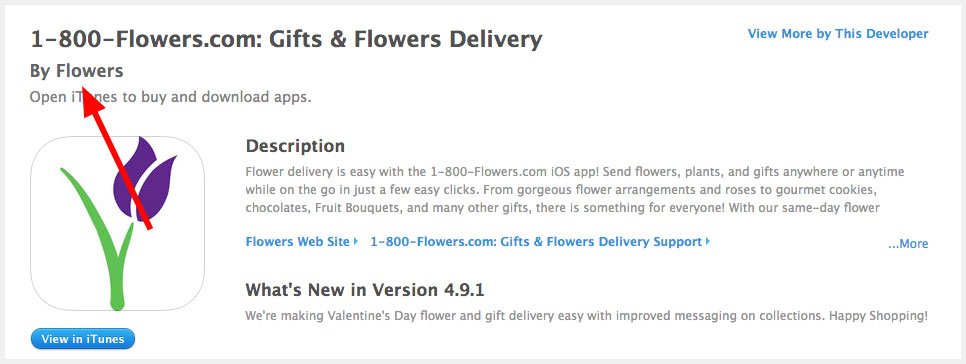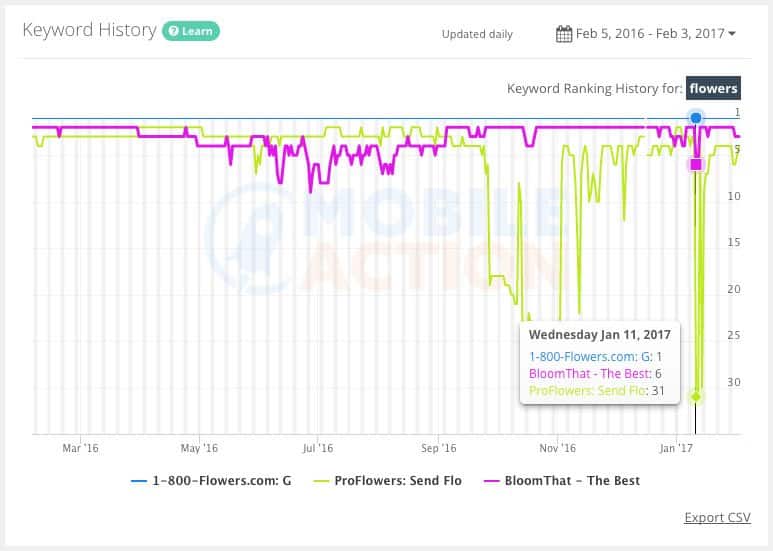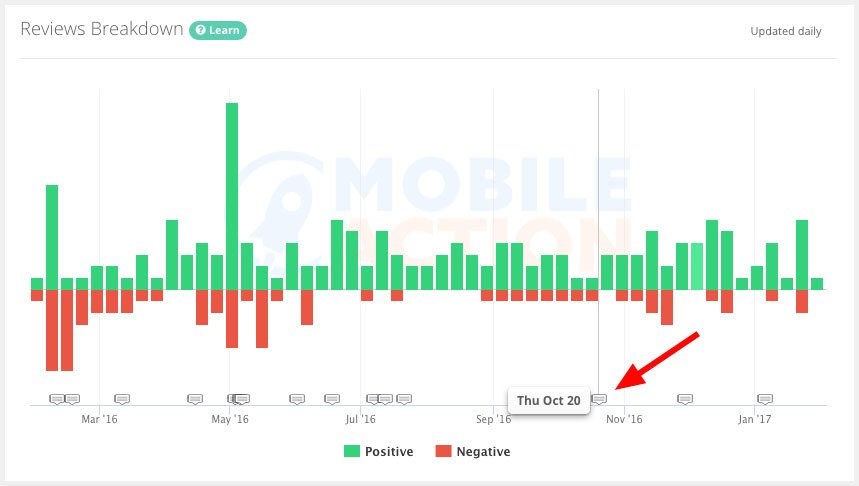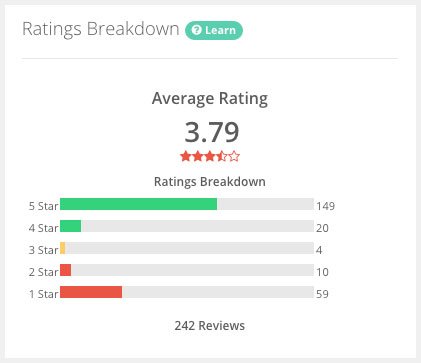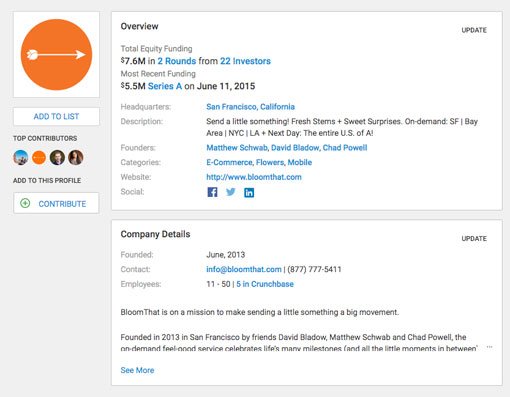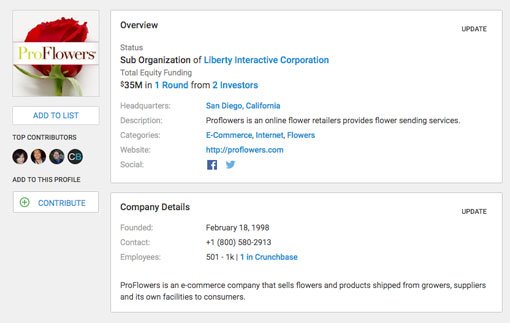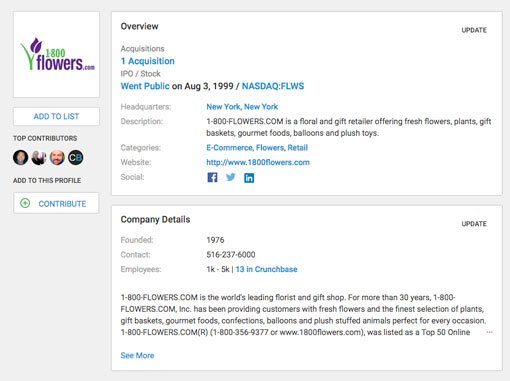Many people in the world have February 14th etched into their minds…or at least they have an alert set on their phones.
Either because they expect a gift, or they have to remember to give a gift. Otherwise, the latter may end up sleeping on the couch.
…or worse. According to this study, 53% of women said that they would end their relationship if they don’t get anything for Valentine’s Day.
Regardless of which side of the couch you are on, Valentine’s Day is actually an interesting celebration, both from a historical perspective and for app publishers who market highly seasonal apps.
So in this post, we will show you some of the interesting things that we discovered about Valentine’s Day and the flower delivery app niche.
Maybe you don’t care about the history lesson.
Fine, feel free to skip the next section.
But if you have an app that depends on seasonal events and holidays, you should stick around because we will show you how to dissect your market and find clues that you can use to beat your competition.
Where Did Valentine’s Day Come From?
Before we start talking about apps that help us buy flowers from our phones…how the heck did Valentine’s Day start anyway? We were curious, so we did some research.
The exact history is a little fuzzy.
As far as historians can tell, there were a few different martyrs (named Valentine) that were celebrated on February 14th. However, there is one who is probably responsible for the origin of Valentine’s Day.
That’s right, what we now know as a day of love and candlelight dinners, probably originated from a beheading.
…but it was for a romantic cause.
Supposedly, the martyr for which Valentine’s Day is named, was a Roman priest in 3rd century A.D., under the rule of Emperor Claudius II. As the story goes, Claudius had made it illegal for soldiers to marry because he thought that single men made better soldiers.
However, Valentine saw marriage as a God-given right and continued to marry soldiers in secret. He was caught and executed.
In time, the tragedy of this story wore off and was romanticized by the likes of Chaucer and Shakespeare. So from this bloody past, comes the day that we now associate with candy and flowers.
The Power of Flowers
There are several gifts that are popular on Valentine’s Day. You could go the candy route…or cards are another common gift.
But nothing is more Valentine’s Day than red roses.
It is estimated that $1.9 billion was spent on Valentine’s Day flowers last year and about 64% of men buy flowers on this day.
Valentine’s Day is the third most important holiday in the flower industry, behind Mother’s Day and…Christmas/Hanukah.
So we decided to analyze the top flower delivery apps to see how the very seasonal nature of this industry affects these apps and how these companies market their apps.
Flower Delivery Apps with the Best App Store Visibility
First, we wanted to find out which flower delivery apps have the best visibility in the US. So we searched for the keyword “flowers” in the US App Store, and these are the apps that came up.
So for the rest of this post, we will examine these apps, with the exception of Bouqs. We will not study Bouqs because, in spite of ranking well for this important keyword, it has the least number of total reviews.
About 1 in 300 users leave a review, so this shows that Bouqs probably also has the least number of users. Therefore, in order to keep our graphs clean, we will only analyze three apps.
The Seasonality of Flower Delivery Apps
Since we already know that Valentine’s Day, Mother’s Day and Christmas are the most important flower-giving holidays, let’s take a look at how well each app takes advantage of these holidays.
Here is the 1-year rankings history of these three apps in the US App Store Shopping category, from our ASO Intelligence module.
All apps rank very well, right before Mother’s Day.
Before Valentine’s Day, however, there is a noticeable difference in rankings. All apps still see a boost in rankings, but not to the same degree.
Then during the Christmas season, only one app gets a significant boost, 1-800-Flowers.com (purple line). The other apps actually start to decline during this period.
As you will also notice, the 1-800-Flowers.com app ranks really well during Thanksgiving. I wouldn’t typically think of this as a flower-giving holiday, but apparently, they have figured out a way to get people to buy flowers during this holiday too.
Overall, the 1-800-Flowers.com app has very steady rankings throughout the year, while BloomThat has the most volatile rankings.
Now that we have established these patterns, let’s take a deeper look at each app and see if we can figure out why these apps have such different ranking graphs.
Keywords for Flower Delivery Apps
Let’s start with keywords. Here are some of the top keywords that we are following in our Keyword Tracking module. We used the 1-800-Flowers.com app as the primary app, so that is why the Chance is so high.
Keep in mind that there are more long-tail keywords out there, but we wanted to show you some of the more popular download terms that someone might search for if they wanted to find an app to send flowers.
Since the keyword “flowers” is the most searched and most competitive keyword on this list, let’s see if we can find if there is any correlation between ranking for this keyword and the category rankings of these apps.
When we look at the 1-800-Flowers.com app’s Keyword Intelligence, we estimate that this keyword brings this app the most organic downloads. In fact, this is the most important keyword for all three apps.
All three apps have the keyword in their names and one even uses this keyword as their publisher name. While the publisher name isn’t a major keyword ranking factor, it does count towards your keyword list…and every advantage helps.
Somebody was thinking ahead!
So maybe the rankings history for this keyword will explain the seasonal fluctuations. Here is the keyword ranking history for all three apps, for the keyword “flowers.”
When we look back at the same 1-year period, we see that both BloomThat and 1-800-Flowers.com have maintained excellent rankings for this keyword, while ProFlowers has been all over the place.
But this does not explain the seasonal fluctuations in category rankings. So let’s look at some other places where we can gather information.
Clues in App Reviews
Next, let’s take a look at app reviews. By searching for certain holiday keywords, we might be able to learn how people found the app and thus, give us some clues as to how the app is being marketed.
They might say that they found it via Search Ads or they heard about it at an event. But when we searched these holidays in the reviews, we had no such luck.
Oh well, it was worth a try. However, we noticed that most of the reviews looked legit and there are some really long reviews!
This would be a great place to find ASO keywords.
App Updates
OK, so reviews didn’t give us any clues, but how about app updates? You see, apps that update more often are able to fix bugs faster, test new ASO keywords and generally keep users happy.
When we looked at the number of updates over the last year, the 1-800-Flowers.com app has a huge advantage. Here are the number of updates each app did over a one year period.
- 1-800-Flowers.com: 16
- BloomThat: 3
- ProFlowers: 7
Now things are making a little more sense. With more than double the number of updates, the 1-800-Flowers.com team is able to customize their app for the big flower-giving holidays.
When we look at their version updates (the conversation bubbles at the bottom of the chart) we see how well they keep up with the holidays. Here’s where they probably publish an update for Thanksgiving.
When we look at the average rating for each app, we can see 1-800-Flowers.com has a clear advantage. The current version has a 3.79 out of 5 average rating.
Of course, this is not totally because of the number of updates they do, but that can be a huge factor in keeping app users happy.
So the other apps might have better results if they updated more often and customized the app for different holidays.
Company Size
Finally, let’s take a step back and look at the bigger picture. Sometimes we can get so wrapped up in App Store data, that we forget to look outside the App Store.
While App Store keyword optimization can greatly increase downloads, some companies have enough money to have a big marketing team and can dominate a category by purchasing ads.
So we searched Crunchbase to find out how big these companies are…
The smallest company is BloomThat. They have raised $7.6 million in the capital and have less than 50 employees.
The next biggest company of flower delivery apps is ProFlowers, with $35 million in investment and less than 1,000 employees.
Then we come to 1-800-Flowers, which is a public flower delivery app and has less than 5,000 employees. It was also started in 1976, so that explains why they have a phone number for a company name.
Since they are such a large company in this space, they are going to have a lot more money to spend on advertising and most likely explains their year-round dominance of this niche.
From this research, there are two lessons that can be learned…
1. Smaller Apps Can Compete
Even though BloomThat is a significantly smaller company, they appear at the top of the search results for flower delivery apps. This is a perfect example of how a startup can compete against an industry leader, with some good ASO and a quality product.
2. Study Similar Apps
When researching other apps in your category, be sure to look at apps that are about your size, or a little bigger. You can use our Market Intelligence module to get estimated downloads and revenue for each app.
While a smaller company can compete against an established company, your marketing strategy is going to be very different if you have a $1 million marketing budget or a $15K budget.
So keep this in mind and figure out strategies that are working for apps that are in a similar position to you. If you are an established flower company looking to make an app, study 1-800-Flowers.com. If you are a startup, study what BloomThat does.
Also, remember to download and actually use all of the flower delivery apps you are competing against.
You will learn a ton!
Conclusion
We hope that this post has helped you understand what to look for when examining your competition, in a highly seasonal app category in the form of flower delivery apps. Actually, this process would work when researching any niche.
Understanding the overall market and App Store data is key to your success. Now sign up for a free account and start doing some research!







